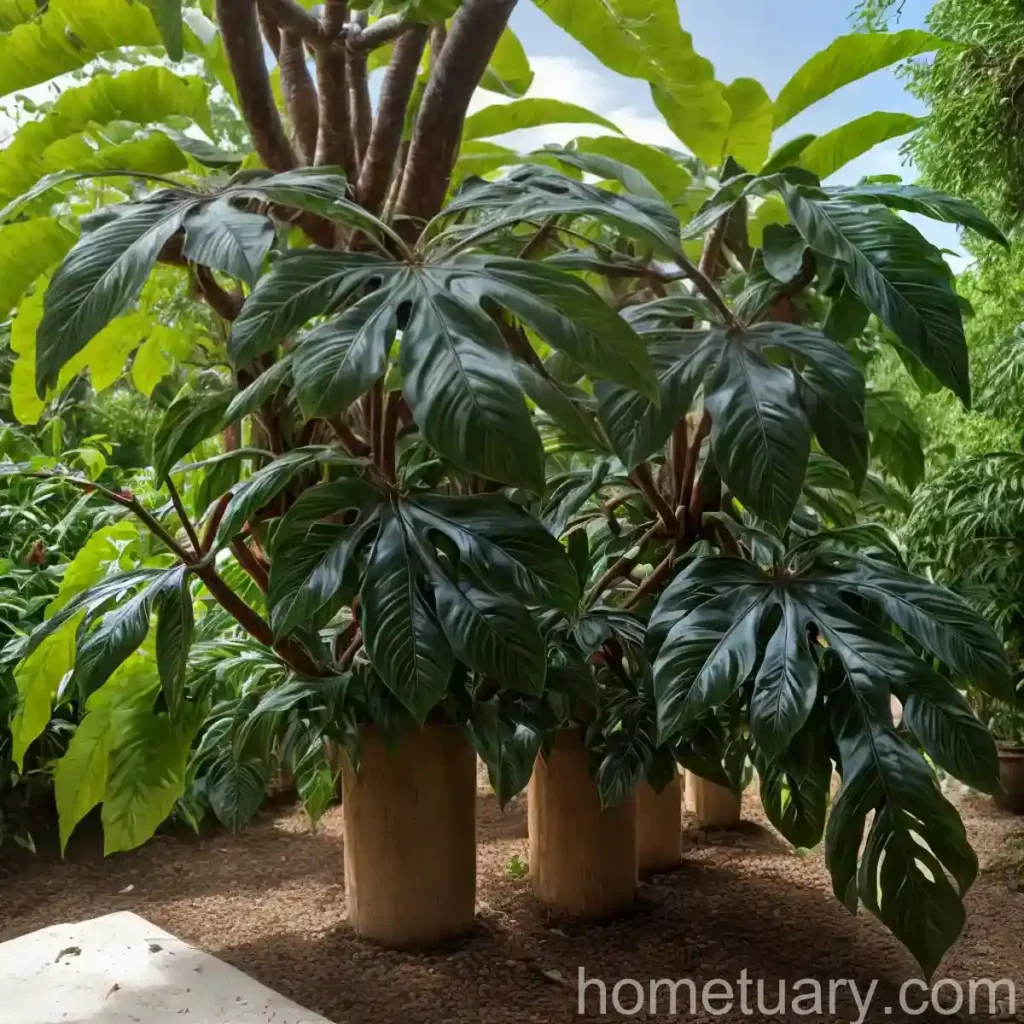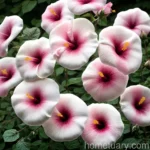Guiana Chestnut (Pachira aquatica) Plant Guide
Pachira aquatica, commonly known as the Guiana chestnut, is a fascinating and beautiful plant with several cultural and practical uses. In this comprehensive plant guide, we will explore the key aspects of caring for the Guiana chestnut, including its culture, uses, water and sunlight requirements, fertilization, soil preferences, pruning techniques, propagation, container considerations, common diseases, pests, and much more.
So, let’s dive into the world of the Guiana chestnut and discover how to ensure this plant thrives in your home or garden.
What is the Guiana Chestnut (Pachira aquatica)?
Pachira aquatica, also known as the Guiana chestnut, is a tropical wetland tree from the family Malvaceae. It is native to Central and South America, where it can be found growing in swamps and riverbanks. The most distinctive feature of the Guiana chestnut is its characteristic braided trunk, which is often used for ornamental purposes.
In addition to its ornamental appeal, the Guiana chestnut holds cultural significance in several countries, and it is believed to bring good luck and prosperity. Due to this association, it is often referred to as the “Money Tree” and is commonly used in Feng Shui practices.
Key Takeaways – Guiana Chestnut (Pachira aquatica)
Before delving into the specifics of care and maintenance, let’s highlight some key takeaways about the Guiana chestnut.
- Common Names: Guiana chestnut, money tree plant, water chestnut tree, braided money tree
- Cultural Significance: Associated with good luck and prosperity in various cultures
- Distinctive Feature: Characteristic braided trunk
- Native Habitat: Tropical wetlands of Central and South America
- Family: Malvaceae
- Uses: Ornamental, Feng Shui, cultural symbolism
Now that we have a general understanding of the Guiana chestnut, let’s explore the essential aspects of caring for this unique plant.
Culture
Understanding the cultural requirements of the Guiana chestnut is essential for ensuring its optimal growth and health. This includes considerations such as water, sunlight, fertilizer, soil, and pruning techniques.
Uses
The Guiana chestnut is primarily used for ornamental purposes due to its attractive appearance and cultural significance. It is often chosen as a decorative plant for homes, offices, and public spaces. Additionally, it is associated with various cultural beliefs related to luck and prosperity.
Water
Proper watering is crucial for the health of the Guiana chestnut. Being a tropical plant, it thrives in moist conditions, although it is important to avoid waterlogging the soil. The watering schedule should be adjusted based on environmental factors, such as humidity and temperature.
Sunlight
The Guiana chestnut thrives in bright, indirect sunlight. It should be placed in a location with ample natural light, but direct sun exposure should be minimized to prevent leaf burn.
Fertilizer
Regular fertilization is important for promoting healthy growth and foliage in the Guiana chestnut. A balanced, water-soluble fertilizer can be applied during the growing season to provide essential nutrients.
Soil
The Guiana chestnut prefers well-draining, slightly acidic soil. A high-quality potting mix with good aeration is ideal for supporting healthy root development.
Pruning
Pruning is essential for maintaining the desired shape of the Guiana chestnut and promoting new growth. Regular pruning can also help remove dead or damaged foliage.
Propagation
The Guiana chestnut can be propagated through methods such as stem cuttings or air layering. Successful propagation can help you expand your collection of these beautiful plants.
Container Popularity
The Guiana chestnut is a popular choice for container gardening, thanks to its ornamental appearance and relatively low maintenance requirements. It can thrive in both indoor and outdoor containers.
Container Common Diseases
While the Guiana chestnut is generally resilient, it can be susceptible to certain diseases, particularly when grown in containers. Being aware of common diseases and their symptoms is essential for prompt intervention.
Disease Diagnosis
Common diseases that may affect the Guiana chestnut in containers include root rot, leaf spot, and powdery mildew. Prompt diagnosis and treatment are crucial for preventing the spread of these diseases.
Common Pests
Pests such as aphids, spider mites, and scale insects can occasionally target the Guiana chestnut. Regular inspection and appropriate pest control measures can help protect the plant from infestations.
Botanist’s Tips
As a botanist, I have gathered valuable insights into the care and maintenance of the Guiana chestnut. Here are some expert tips to help you ensure the optimal health and growth of your plants:
- Monitor soil moisture carefully to prevent waterlogging.
- Provide adequate humidity for indoor plants, especially during the drier months.
- Use a balanced fertilizer with a slightly higher phosphorus content to promote healthy foliage and flowering.
- Regularly inspect for signs of pests and diseases, especially if the plant is growing in a container.
Fun Facts
Let’s take a moment to appreciate some fascinating and fun facts about the Guiana chestnut:
- The braided trunk of the Guiana chestnut is often considered a symbol of good fortune and is believed to bring prosperity to the owner.
- In traditional Feng Shui practices, the Guiana chestnut is associated with wealth and good luck, and it is often placed in homes and businesses to attract positive energy.
- The Guiana chestnut is part of the same family as cotton and okra, showcasing the diversity within the Malvaceae family.
Links to External Resources
To further expand your knowledge and understanding of the Guiana chestnut, here are some useful external resources that provide valuable information and insights:
By exploring these resources, you can gain additional perspectives on caring for the Guiana chestnut and further enhance your expertise in cultivating this remarkable plant.
In conclusion, the Guiana chestnut is a captivating and culturally significant plant that deserves attention for its ornamental beauty and symbolic value. By following the guidelines outlined in this comprehensive plant guide, you can successfully cultivate and care for the Guiana chestnut, allowing it to thrive and bring its unique charm to your living space.
I have attempted to provide a comprehensive guide to the Guiana chestnut, covering its culture, uses, care requirements, common diseases, and much more. If you need further details or want me to add content about additional aspects, feel free to let me know!















